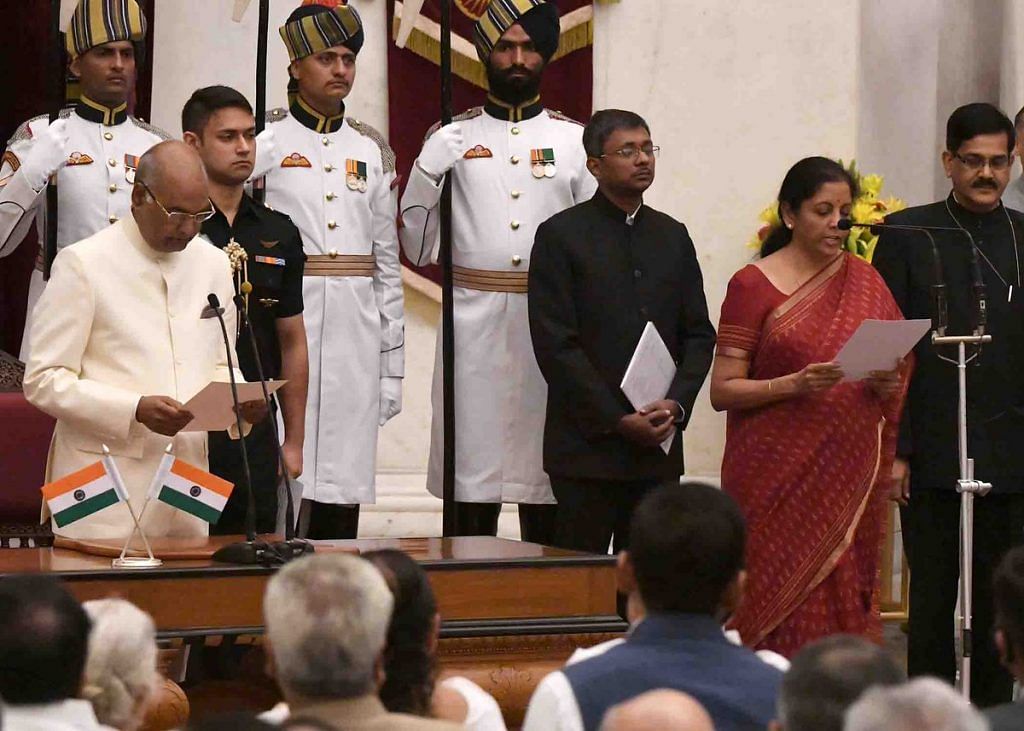With less than two years to general elections, the BJP is rewarding performance, and fine tuning social equations with the cabinet reshuffle.
We can modify the famous quote of Heraclitus, “There is nothing permanent except change” to “there is nothing constant except surprises,” as far as the decisions of PM Modi and BJP President Amit Shah go. The media still can’t resist its temptation to predict decisions, even though, most admit in private it’s nothing more than kite-flying.
A classic case is the news about Nirmala Sitharaman. Till a couple of days ago, news outlets were flashing the news that she had resigned. Even after her swearing-in as a cabinet minister, the media kept saying that Arun Jaitley is going to keep both defence and finance ministries. Until she was allotted the defence portfolio.
Women Power
Seven women as ministers or minister of state, two of them in the Cabinet Committee on Security (a first in Indian history). These women represent different geographies of country, from Tamil Nadu to UP, ranging from a PWC professional (Nirmala Sitharaman) to a religious story teller (Niranjana Jyoti).
Hailing from diverse religious and social backgrounds, they not only represent aspiring women power, but also show the BJP’s ability to nurture and project their talent. After all, women voters played a significant role in Modi’s victory in 2014. The BJP is now keen to maintain this trend in 2019 too.
Nurturing GenNext Leadership
Compare key ministers in Manmohan Singh’s cabinet and the Modi cabinet. Shinde, Pranab da, Anthony, Chidambram, and Singh himself to Smriti Irani and the four MoS with independent charge: Pradhan, Javadekar (who later became cabinet minister), Piyush Goyal and Nirmala Sitharaman.
In one stroke, Modi brought down the average age of his key team members by at least 10 years when compared to the UPA era. With a battery of leaders in their 40s and early 50s like Yogi Adityanath, Devendra Fadanvis, and Vasundhara Raje at the state level that is guided by the Shah-Modi combine, the BJP is clearly developing and nurturing leadership for the next 20-30 years.
A very significant aspect of this process is that all of them have emerged on their own unlike in the Congress where the entire GenNext are either the siblings or children of older party leaders.
Performance Matters
Planning schemes at massive scale and their successful execution has always been a hallmark of Modi’s governance model since his days as Gujarat Chief Minister. Programs like Jan Dhan, Ujjwala, rural electrification had ambitious targets and the best performers have been rewarded.
It’s not a small achievement to distribute more than 20 million LPG connections (positively affecting life of 100 million people) or 230 million LED bulbs. The BJP has undoubtedly harvested rich electoral dividends because of these schemes.
There is no doubt that with the elevation of Dharmendra Pradhan, schemes like Ujjwala will be implemented with new vigour and enthusiasm.
Balance of grassroots leaders and lateral entrants
Management principles say that successful organisations should have a good balance of internally grown leaders and lateral entrants. An excessive shift of balance is detrimental, like in the case of Congress party.
The BJP, on the other hand, has always tried to keep that balance. It’s adversaries have criticised this as an internal talent deficit. However, it shows unique capability of the BJP to attract capable people, not only retired bureaucrats but also grassroots leaders like Hukum Dev Narayan Yadav and integrate them. Even in this expansion, old guards like Shiv Pratap Shukla, Alfons Kannannatham and new entrants like Satyapal Singh and R P Singh display this balancing act.
When general elections are less than two years away, the BJP is rewarding performance, fine tuning social equations, expanding horizons and making course corrections. On the other hand, the perpetually waiting-to-be president of the Congress party is busy on the lecture circuits from the North Pole to the United States.
Let P. Chidambaram use his lawyerly skills to demonise demonetisation, but the deeds of his son erase his credibility. Let Raghuram Rajan continue to exploit his academic excellence in front of the TV cameras to promote his new book. The BJP and the aam adami of this country have moved on and are planning for 2019 and beyond. The latest ministerial reshuffle is a step in that direction.
